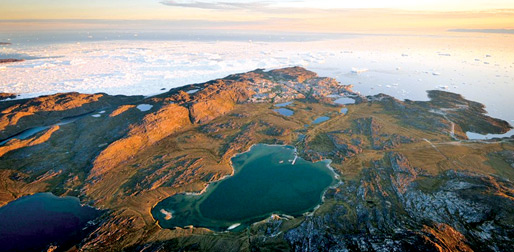Valuing the priceless: Greenland and the World Parks Congress
Recently, an audience comprising presidents, prime ministers and more
than 5,000 delegates was listening closely to Australia's Minister for
the Environment Greg Hunt's opening address at the 2014 IUCN World Parks
Congress.
He had the somewhat unenviable position of speaking for a host nation
that has recently been linked to a number of high profile turnarounds on
environmental policies - the scrapped carbon tax legislation, the halt
on the establishment of 40 new marine parks and the attempt to take
climate change off the agenda, just to name a few.
But there was good news as well: Minister Hunt announced that
Australia had just achieved its goal of having 17 percent of its lands
in protected areas. Minutes later, the sentiment was echoed by the New
South Wales State Minister for the Environment Rob Stokes who traced the
etymology of "park" back to ancient Rome when parricus referred to the
fences themselves rather than the land they enclosed.
But a surprisingly common talking point during the World Parks
Congress was just how much action is needed on the other side of the
fence: outside of protected areas.
 The concern is that even though the pressures of unsustainable use
can be reduced through the designation of protected areas, there is a
potential for such activities to simply be displaced into other
surrounding areas. The concern is that even though the pressures of unsustainable use
can be reduced through the designation of protected areas, there is a
potential for such activities to simply be displaced into other
surrounding areas.
Multiple speakers focused on the need for holistic approaches that
couple the protection of "ecologically significant" areas with
sustainable management of surrounding areas.
But are there cases in which the height of the fence doesn't matter?
Where even the strictest levels of protection aren't enough?
Such questions may have been on the mind of audience members during a
presentation by Jørgen Hollesen, a Senior Researcher at the National
Museum of Denmark. Hollesen's recent work has taken him to Greenland,
the world's largest island, where small communities have subsisted along
the coastlines for thousands of years.
A combination of continuous habitation stretching across millennia
and bitingly cold temperatures has left the coasts of Greenland peppered
with over 5,000 registered archaeological sites.
While many of the world's ancient sites may yield pottery shards and
stone sculptures, in Greenland even the organic matter has been
excellently preserved due to the cold temperatures. How well preserved?
A 4,000-year-old tuft of hair excavated from a midden (refuse heap) in
Qeqertasussuk was so well preserved that DNA sequencing could be
conducted, leading to unprecedented insights into early humans.
In an almost comical finding, the DNA sequencers discovered that this
lost bit of hair had come from a man with a "risk of baldness".
And it's not just hair - excavations have yielded knives with their
4,000-year-old wooden handles intact, carved wooden panels from Viking
times and even remarkably well-preserved mummies.
Three distinct cultures are already known to have inhabited the
coasts of Greenland - the Saqqaq, Dorset and Thule (not to mention the
waves of Norse settlers from Europe) - and many questions about their
daily lives remain unanswered.
- Our World |

